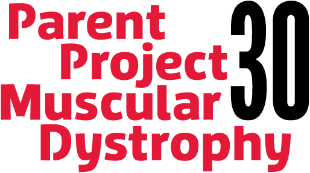
With the official start of winter quickly approaching and the icy weather already here, we want to remind your family about the importance of safety, and also what to do if and when accidents happen. People living with Duchenne, especially those on steroids, are at risk for having weak bones, a condition known as osteoporosis. Osteoporosis is diagnosed when bones break with very little trauma, which means they are more fragile due to low bone mineral density, small bone size, or both.
Snow and ice can lead to unsafe, uneven surfaces, which cause falls in the winter months. Falls are the most common cause of long bone fractures, usually breaking bones in the legs (i.e. femur, tibia, fibula). However, long bone fractures can also happen after people with Duchenne lose ambulation and can occur with very little trauma, such as during a transfer or being lifted, or just being “bumped” or injured with minimal pain or discomfort. Long bone fractures, or significant bumps, put people living with Duchenne at risk for Fat Embolism Syndrome (FES), a life-threatening situation that requires immediate attention in the emergency room and is a risk for losing ambulation. For these, and many other reasons, it is important to stay safe.
Another type of bone fracture that can happen to people living with Duchenne is a vertebral compression fracture. When the bones of the spine (vertebrae) become osteoporotic and thin, they may fracture without any trauma at all. This type of fracture may be “silent,” or have minimal symptoms at first; if left untreated, vertebral fractures are associated with more vertebral fractures in the future and worsening back pain.
For these, and many other reasons, it is important to stay safe.
Staying Safe
It is recommended that you begin bone health monitoring and fracture prevention at the time of diagnosis or at the initiation of steroids. Here are some helpful hints:
- It is important to stay safe to prevent falls, thus avoiding fractures from happening. If your child is ambulatory, it is important to keep shoes on most of the time to avoid slips, keep paths in your house clear to avoid tripping, and watch for overexertion. Children with Duchenne may get tired more easily, and it is always a good idea to take a rest or use mobility devices (scooters, etc.) when needed. Keep in mind that some falls cannot be prevented despite every effort you make.
- If you or your child is not ambulatory, it is still important to take safety precautions. This includes providing safe transfers to chairs, beds, or in the shower. It is also important to always wear seatbelts in wheelchairs, shower chairs, and the car – if there is a seatbelt available on any device, use it!
- As an extra precaution during the winter, it is advised that ambulatory children, and caregivers who are assisting them, wear “boot grips” (sometime called “Yaktrax”) on the soles of the boots. They can help tremendously to avoid falls on the snow and ice.
- Weight-bearing exercises recommended by your doctor or physical therapist (such as walking and standing as tolerated; not to be confused with weight-lifting exercises) can help your bones stay strong for a longer period of time. Ask your doctor and physical therapist about safe exercises for arms and legs.
- Calcium is a nutrient that strengthens bone. In addition, vitamin D helps your body absorb calcium, and together they help build and maintain bone. This is why it is recommended to have adequate levels of calcium and vitamin-D to optimize bone health. Annual assessments of calcium intake and blood vitamin-D levels (via a laboratory test called a “25-hydroxyvitamin D level”), and a dietician can recommend nutrition modification if needed. Sometimes it is not possible to get enough calcium in the diet, depending on your or your child’s dairy intake. In such cases, a calcium supplement may be recommended by your care team.
- Monitoring you or your child’s bone health through imaging tests can also identify osteoporosis and help you to prevent fractures from happening. Children on steroids should have a lateral spine X-ray at least every 1-2 years to evaluate vertebrae health and to identify fractures of the spine in their earliest stages, even before they become symptomatic with back pain. Spine X-rays may need to be repeated sooner if there is back pain.
- In addition, a dual-energy x-ray absorptiometry (DEXA) scans can also be done to measure bone density. DEXA scans will produce a Z-score, which is a comparison of bone density to “healthy” individuals of the same age. If the Z-score is found to be declining, annual DEXA scans will closely monitor any further changes in bone density. However, if unable to have both imagining tests, it is recommended to prioritize the lateral spine x-ray.
- The current standard of care for treating osteoporosis in childhood is IV bisphosphonate therapy (pamidronate, zoledronic acid, or neridronate). The goal of bisphosphonate therapy is to increase the density of the bones of the body, including the vertebrae in the spine. Increasing the density of bones puts you or your child at less risk for a fracture. For adults, additional bone health therapies exist for bone health, including those that promote additional bone growth (Teriparitide) and prevent the breakdown and resorption of bone (Denosumab).
What to do if you suspect a fracture:
Due to the risk for femur fractures with low trauma, it is important to know the signs and symptoms of a possible femur or other leg fracture:
- Severe pain, which may worsen with movement
- Swelling of the leg
- Bruising of the leg
- Deformity or shortening of the leg
- Inability to walk (if ambulatory)
If you suspect a long bone fracture, such as the femur, it is important to take prompt action. You should go to the emergency room as quickly as possible to avoid harmful risks such as infection, loss of ambulation, and Fat Embolism Syndrome. Fat Embolism Syndrome, as mentioned above, is a serious complication of fractures, and the emergency room staff should be aware of this risk.
It is imperative you bring your emergency card or download the PPMD app to show to the emergency room staff. As with every emergency, you should contact your neuromuscular specialist (NMS) so they are aware of the condition. If you or your child needs surgery and you or your child is on steroids, “stress steroid” coverage will be needed, meaning that extra steroid will be given in order to help the body handle the physical stress of the surgery.
There are both surgical and non-surgical treatment options for fractures of the leg. The decision of which intervention to undergo should include input from your neuromuscular care team, as well as an orthopedic specialist. Factors that should be considered include ambulation status, severity, and location of the fracture.
To learn more about leg fracture treatment (surgery, casting and splinting), please click here.
The above information was reviewed by Dr. Leanne Ward, University of Ottawa, who is a pediatric endocrinologist specializing in bone health.



 by: Parent Project Muscular Dystrophy
by: Parent Project Muscular Dystrophy

